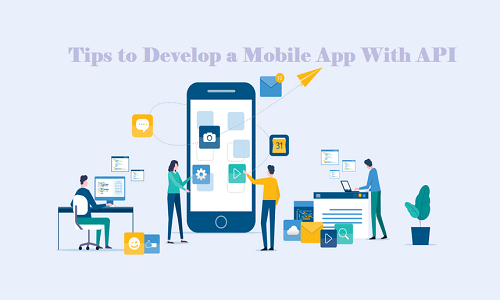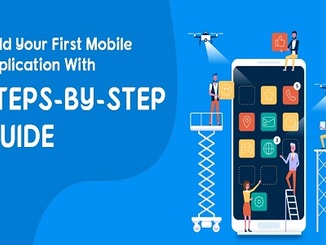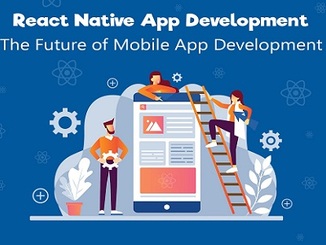
When you get the assignment for mobile app development, take a look at the apps on your phone as a user. As a mobile app developer, you need to know what kind of an app is truly user-friendly. You’ll observe that all the good mobile apps you use are built using API.
As a developer, using an API will benefit you greatly as your job for coding gets reduced. This is because an API will perform quite a lot of important functions, which otherwise require a great deal of code. Let’s understand how this works.
What is an API?
 API stands for application program interface. It is a software that acts as an intermediary or connecting link between two applications or the application and the server. The primary function of an API is to send your input data to the server and the interpretation of the data by the server back to you. Here’s an example to explain how it works:
API stands for application program interface. It is a software that acts as an intermediary or connecting link between two applications or the application and the server. The primary function of an API is to send your input data to the server and the interpretation of the data by the server back to you. Here’s an example to explain how it works:
Apps like Uber and Zomato are integrated with Google Maps. When you’re finding directions to a restaurant, the API will send your request to Google Maps. The app will take the request, interpret it and send the data to you through the API. That’s how you are able to access Google Maps on other applications.
What are the Benefits of Using APIs?
Using an API for mobile app development benefits both the developer as well as the user. Here’s why you should build a mobile app using API:
Provides Greater Functionality with Lesser Coding
The primary function of an API is to add functionality to the mobile app by integrating it with other apps or a web server. When your app needs access to a wide database, instead of coding it entirely into the app, it is way simpler to integrate it externally.
You Can Complete Your Work Faster
Given that you had to do lesser coding, your work behind app development naturally finishes faster. In other words, using API to build a mobile app is way more efficient than doing all the coding from scratch.
Faster Login Providing Better User Experience
For many mobile apps, users have to create an account in order to use them. We all prefer signing in through Google or Facebook instead of signing up from scratch as it is more time saving. Adding Google and Facebook APIs in the app makes it possible, making it more user-friendly.
Increases Social Engagement
Using APIs of social media apps can help you increase your app’s engagement on social media as it allows users to share content, provide reviews and post comments. This is a benefit for the app owner or brand as it helps them gain more users.
Increases Security of the App
An API adds a layer of security to the app, by preventing complete exposure of data. When the app needs data from another app or server, the API ensures that all your phone’s data doesn’t get exposed to the server and all the server’s data isn’t exposed to your device.
Developing an App with Existing APIs!
Usually, most mobile app developers prefer using existing APIs. The option is a lot more efficient, time saving and convenient for the developer. Moreover, in most cases the functionality that you need to add to your mobile app will mostly demand you to integrate existing APIs.
The existing APIs that you may use can be either free or paid. Here’s how you can go about the process of using existing APIs:
1. Sign Up at an API Marketplace
The internet has a marketplace for all kinds of products and services – from physical products to software products. Even APIs have their own marketplace where you can sign up. One such marketplace is Rapid API. It comprises of 10,000 APIs and a community of 1 million developers.
2. Discover the Existing APIs You Can Use
Based on your needs, look for existing APIs in the market. First, check for free ones as they will be cost-efficient to use. In case free ones aren’t available, you start searching for paid ones. Some of the most popularly used free APIs include:
- Google Maps API
- YouTube Data API
- Gmail API
- Google Drive API
- Twitter API
- Facebook API
- Google Calendar API
- Foursquare API
- Google Analytics API
- Weather API
3. Test the API Before Releasing the App
Once you have subscribed for the API from the marketplace, after integrating it in your app you need to test its usage. From the Endpoints tab on the API console, you can test its functioning by entering a few parameters. Once you’re certain it is working properly, you can proceed towards completion of your mobile app development.
4. Use Multiple APIs
An app can have as many APIs as it wants. A single API will connect your app to a single app or server only. So, say for example you want to allow login through both Gmail and Facebook, you’ll need both Gmail and Facebook APIs integrated with your app. While planning your requirements, consider some of the common functionalities you might require:
- Content management
- Social sharing and engagement
- Login through existing accounts
- Online payments
- GPS access
- Tracking user engagement
Building an API from Scratch!
This process is going to be more time consuming for obvious reasons, but has its own set of benefits. Usually, we tend to go for this option only when you don’t have an existing API to suit your requirement within your reach or budget. Innovative mobile apps might require APIs built from scratch. Here’s how you can utilize it to the fullest:
- Use common architecture for developing APIs as they are time-saving, efficient and easy to use. They make modifications and updates simpler. The most popular type of common architecture used is pragmatic REST and event-driven architecture.
- Document the API you create so that you can keep a track of it with greater ease. This will also help you share it with the world and even make money out of it.
- Make sure that the API you build is completely secure and safe to use.
APIs have made the process of mobile app development much easier. They provide you with greater functionality, making it both convenient and engaging for users.




Be the first to comment